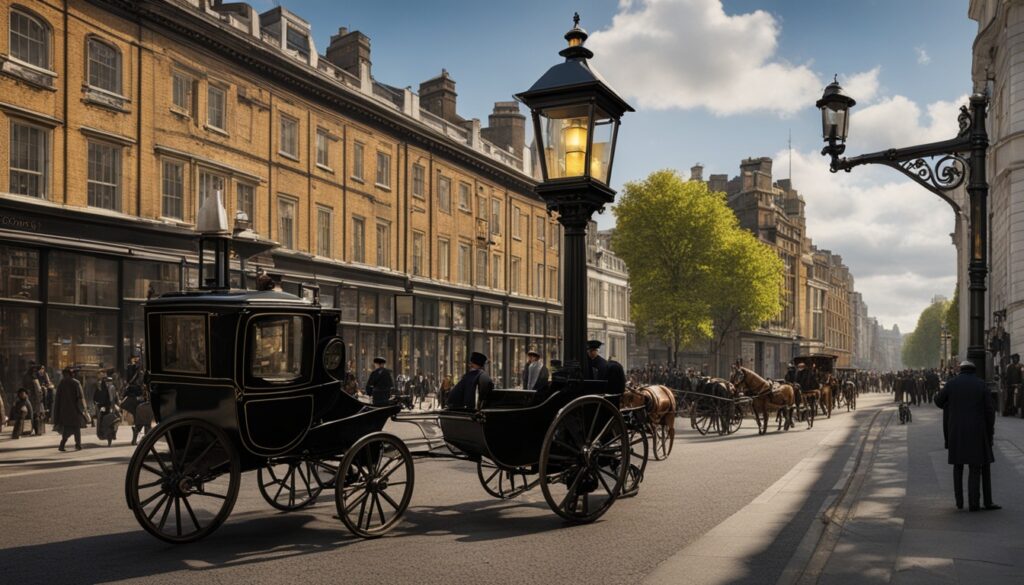When you think about road safety, you might think stop signs came first. But, traffic lights actually came before stop signs. These devices have a rich history that goes back to the 19th century.
The first traffic light was put in London in 1868. It was made to help manage the growing number of cars and people on the streets. As cities got bigger and more people started driving, managing traffic became a big problem.
Traffic lights were a big step forward in making roads safer. They led to the creation of better ways to control intersections. From old gas-lit systems to modern electric ones, traffic lights have changed a lot. They help make traffic flow better and roads safer.
Key Takeaways
- Traffic lights were invented in 1868, predating stop signs
- The first traffic light was installed in London’s Parliament Square
- Early traffic signals were designed to reduce the need for police officers
- Traffic lights evolved from gas-lit to electric and computerized systems
- The development of traffic lights was driven by increased automobile use
- Traffic signals play a crucial role in modern intersection control
The Birth of Traffic Control: Gas-Lit Signals in 19th Century London
On December 10, 1868, London saw a big change in how it moved people around. The first traffic light was put up at Parliament Square. It was a big step towards managing traffic better.

J.P. Knight, a British railway engineer, came up with this new idea. His system used red and green gas lamps and a gas-lit semaphore for night use. It was a big leap in planning cities better.
But, the gas-powered signal didn’t last long. It blew up less than two months later because of a gas leak, hurting the police officer in charge. This event showed the need for safer ways to control traffic. It led to better traffic control systems in the future.
Evolution of Traffic Lights: From Manual to Electric
The traffic light invention changed road safety forever. In 1912, Lester Wire, a policeman in Salt Lake City, Utah, made the first electric traffic light. This innovation was first used in Cleveland, Ohio, in 1914, starting the modern era of traffic control.
Then, in 1920, William Potts, a Detroit policeman, created the first four-way, three-color traffic light. This design included a yellow light, telling drivers to get ready for a change. The new system was so effective that it quickly spread, changing how cities managed traffic.
By the mid-1920s, traffic lights were everywhere in big cities in Europe and the U.S. This fast growth led to the need for standard rules. In 1931, the first Convention on the Unification of Road Signals was signed in Geneva. It made the three-color system the worldwide standard. This was a big step in traffic control, moving beyond early manual signals and the start of stop signs.

Leave a Reply